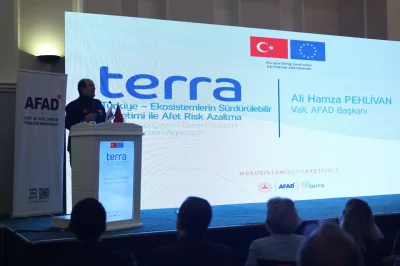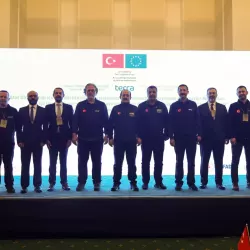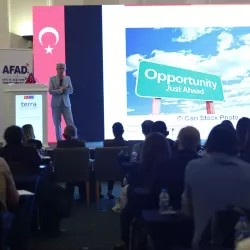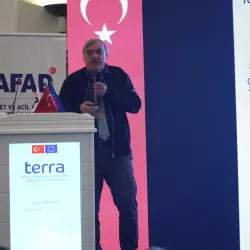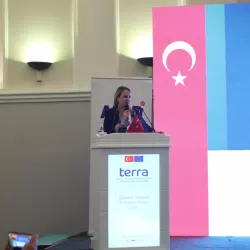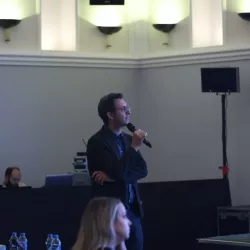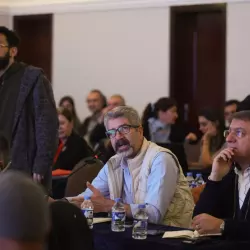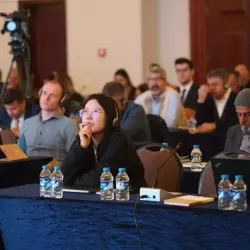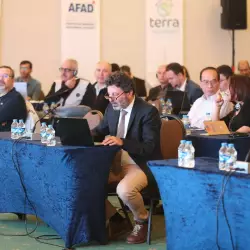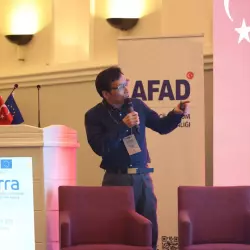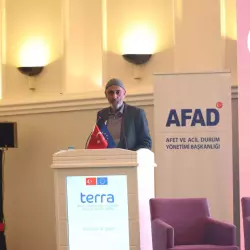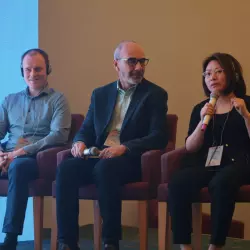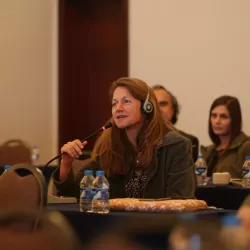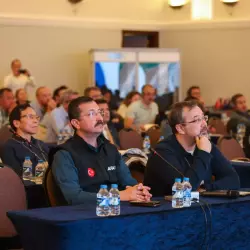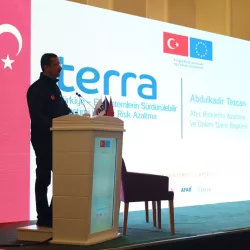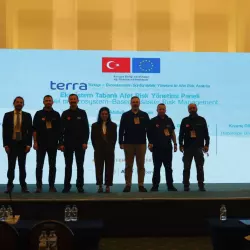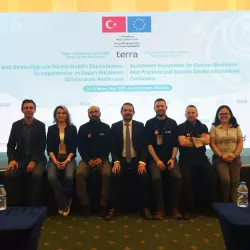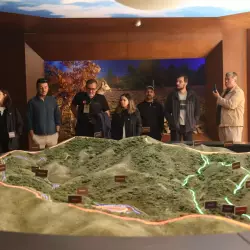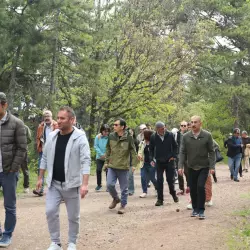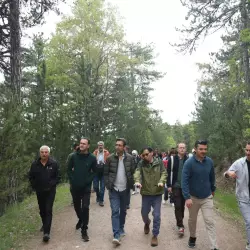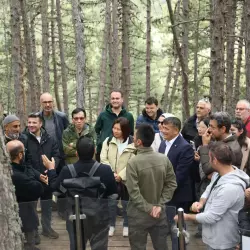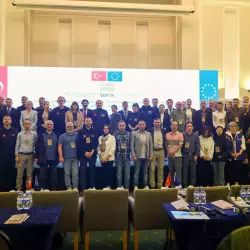INTERNATIONAL CONFERENCE HELD ON MAY 14-16 29 May 2025
Our international conference, "Sustainable Ecosystems for Disaster Resilience: Best Practices and Success Stories," was held in Kızılcahamam, Ankara, from May 14-16, as part of our TERRA project. The conference hosted esteemed speakers from various international organizations, including UNDP, UNDRR, and UNEP. Additionally, Turkish institutions, notably AFAD, shared their experiences and best practices.
The conference, attended by over 150 participants from approximately 10 different countries, was inaugurated by Mr. Ali Hamza PEHLİVAN, President of AFAD.
At the close of the conference, Prof. Dr. Aykut Akgün summarized the conference outcomes as follows:
- Strengthening Preventive Approaches: Ecosystem-based measures should be taken before disasters occur; this is a more cost-effective and sustainable approach in the long term.
Measures taken before a disaster yield more effective results, both humanely and economically. In this context, Ecosystem-based Approaches for Disaster Risk Reduction (Eco-DRR) should be strengthened. Protecting and restoring natural infrastructure (e.g., wetlands, forests, coastal ecosystems) reduces disaster risks while building resilience to climate change. These measures offer solutions that are more cost-effective, sustainable, and provide multiple benefits in the long term.
- Valuing Local and Traditional Knowledge: Communities' relationships with nature can form the basis of solution proposals.
In disaster risk reduction, the long-term relationships of local communities with nature and their traditional knowledge systems should be considered. This information can be a valuable resource for developing both risk perception and response strategies. The participation of local stakeholders ensures that implementations are both more inclusive and effective.
- Importance of Institutional Capacity and Coordination: Data, information, and resource sharing among institutions at different levels must be increased.
An effective cooperation mechanism should be established among all institutions involved in disaster management. Systematizing the sharing of information, data, and resources between central and local institutions is key to rapid and effective intervention. Strengthening institutional capacity can be achieved through personnel training and reinforcing technical infrastructure.
- Integration at the Policy Level is Necessary: Eco-DRR should be integrated into disaster management, climate adaptation, land use, and water management policies.
Ecosystem-based Disaster Risk Reduction (Eco-DRR) should be integrated with climate adaptation, land use planning, water resources management, and general disaster management policies. Policy alignment across these areas can create mutually supportive and consistent strategies. This ensures more efficient resource use and consistency in policy implementation.
- Establishing Monitoring and Evaluation Systems: The effectiveness of practices should be measured with scientific data, and lessons learned should be shared.
The impact of implemented strategies and projects should be regularly monitored and evaluated using scientific methods. These evaluations guide both decision-makers and field workers. Strategies should be updated in light of the data obtained, and lessons learned should be transparently shared with stakeholders. This promotes a continuous cycle of learning and development.
- Addressing Barriers to Eco-DRR: Barriers to the use and widespread adoption of Eco-DRR solutions still exist. Increasing scientific studies, best practices, and awareness in this area would be beneficial.
- Locally Specific Eco-DRR: Eco-DRR implementations should be site-specific; local knowledge and ecological dynamics should be prioritized over one-size-fits-all solutions.
Examples presented in the session showed that each region faces different natural threats, climatic conditions, and socio-economic structures. Successful implementations are possible with the participation of local communities, the cultural acceptance of nature-based solutions, and the active support of stakeholders.
- Eco-DRR's Contribution to Recovery: Eco-DRR projects contribute not only to pre-disaster efforts but also to recovery and reconstruction processes. Ecosystem-based solutions can lead to more cost-effective and lasting results through the restoration of natural processes.
- Multidisciplinary Collaboration is Essential: Multidisciplinary collaborations and inclusive governance are crucial for successful Eco-DRR implementations. Scientists, civil society organizations, public institutions, and local communities working together enhance the feasibility of projects on the ground.
The session emphasized the importance of these collaborations in both data generation and decision-making processes. Sharing knowledge and experience can strengthen information flow not only nationally but also regionally and internationally.
- Prioritizing Nature-Based Solutions in Policy and Finance: Policy and financing mechanisms need to prioritize nature-based solutions. Given current climate change scenarios and increasing disaster risks, investing in nature-based solutions is more advantageous in the long term, both economically and environmentally.
- Eco-DRR as a Complementary Climate Change Tool: Eco-DRR strategies are a complementary tool in the fight against climate change. Such approaches not only reduce disaster risks but also slow down climate change by creating carbon sinks.
In conclusion, Eco-DRR is not just a technical intervention but a holistic approach that considers values, cultures, and human connections. This approach is based on respect for both nature and society. Relearning how to live in harmony with natural processes is key to leaving a safer, more livable, and sustainable world for future generations.


